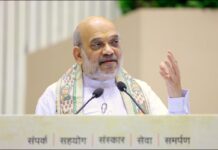 The Senate Immigration Bill,S. 744, entitled the Border Security, Economic Opportunity, and Immigration Modernization Act (BSEOIMA) has been applauded by immigration advocates for bringing much needed changes to the broken immigration system.
The Senate Immigration Bill,S. 744, entitled the Border Security, Economic Opportunity, and Immigration Modernization Act (BSEOIMA) has been applauded by immigration advocates for bringing much needed changes to the broken immigration system.
Although the bill does not have everything that everyone wants, S. 744 offers a pathway to legalization for the 10 million undocumented, a new W visa to allow for future flows of lower skilled immigrants and attempts to clear up the backlogs in the employment and family preferences.
It also reforms the existing system in many ways by removing the 1 year bars to seeking asylum, creating a startup visa for entrepreneurs, clarifying a contentious provision under the Child Status Protection Act, providing greater discretion to both Immigration and Judges to terminate removal proceedings, among many other beneficial provisions.
Unfortunately, the H-1B visa, and accompanying L-1 visa proposals in BSEOIMA have not been received with the same jubilation as other parts of S. 744. The main concern on everyone’s mind is how the bill would deal with the shortage of H-1B visa numbers.
For FY14, which commences on October 1, the H-1B cap was reached on April 5, 2013. S. 744 increases the H-1B cap undoubtedly, but this increase is accompanied by changes to the H-1B and L visa programs, which may make it more difficult to obtain H-1B and L visas quickly. A nonimmigrant visa ought to provide a quick pathway for a much needed worker to be employed in the US. This BSEOIMA fails to do.
BSEOIMA increases the H-1B ceiling to 110,000, which could go all the way up to 180,000. However, any increase or decrease in H-1B visa numbers cannot be more than 10,000 visas from the previous year.
The market based adjustments from year to year, according to the succinct BAL summary, will be based on the number of H-1B visa petitions in excess of the cap and the average number of unemployed persons in “management, professional and related occupations” when compared to the previous year.
Moreover, BSEOIMA will also increase the Master’s cap from 20,000 to 25,000, but this new cap will only be applicable to those who have graduated from universities with advanced degrees in STEM (Science, Technology, Engineering and Math) fields.
This would be a significant improvement from what we have today, which is a paltry 65,000 H-1B visas plus 20,000 for advanced degree holders, which under current law is not restricted to only STEM degree holders.
The Society of Human Resource Management found in a recent national survey that 2/3 (66%) of employers hiring full-time staff experienced difficulty in recruiting scientists, engineers, and cutting-edge technical experts, an increase from 52% in 2011. Until this gap between demand and supply is closed, the US economy cannot reach its true potential.
The current H-1B base cap dates back to 1990 when the American economy was only 1/3 its current size and when the importance of STEM talent was nowhere as evident as it is today.
Our H-1B policy predates the full impact of the Internet and the transition to a knowledge based economy. While we welcome the concept of an H-1B cap escalator, it is overly complex and its lack of precision will not accurately predict or reflect the actual and ever-rising demand for world-class expertise.
For this reason, Congress would be well-served to adopt the methodology set forth in the bipartisan Immigration Innovation (I-Squared) Act (S. 169) which simply and elegantly links H-1B annual adjustments to how fast the H cap had been reached that same year.
Unfortunately, in exchange for an increase in H-1B visas to 110,000, with further adjustments based on a market based adjustment formula, BSEOIMA imposes significant restrictions to accessing the H-1B visa for all employers, as well as L-1 visas for some employers, which will adversely affect corporate immigration practice.
Unlike the 4 level wage system we have today, BSEOIMA will replace it with 3 wage levels, and all non-DOL wage surveys must be specifically sanctioned by DOL. The new Level 1 wage shall be the mean of the lowest two thirds of wages surveyed but can’t be less than 80% of the mean of the wages surveyed.
This is clearly wage inflation with a vengeance. Dependent employers will only be able to pay new Level 2 wages, which is the mean of all wages. The third level shall be the mean of the highest two thirds of wages surveyed.
All employers will have to now attest that they have recruited for the position before filing an H-1B petition via an internet posting for 30 days, including advising where applicants can apply for the job. Dependent employers will have to undergo additional recruitment steps.
The employer must offer a job (not just decline to hire the H-1B beneficiary) to any US worker who applies and who is “equally or better qualified.” One can imagine how this will be interpreted by the DOL when an employer takes the top graduate of Wharton in a Bachelor’s program and turns down a U.S. applicant with an MBA from the University of Podunk.
Or, a law firm employer offers a position to a JD from a national law school over someone with comparable grades and achievements from a local law school. Will an employer dare to take the chance that might not be viewed as legitimate by the DOL?
There is more. The period within which an H-1B complaint can be brought against the H-1B employer is lengthened from 12 to 24 months, even when DOL itself complains or when the source remains anonymous.
This can also encourage malicious complaints from restrictionist organizations, and is bound to result in many more H-1B investigations especially when the bill authorizes annual H-1B compliance audits for any employer with more than 100 employees if more than 15% are in H-1B status.
The advertisement must contain all requirements including the higher than market wage salary. The compelling rationale for all this is the obvious desire to discourage H1B sponsorship by making it more expensive, more invasive, and less concerned with protection of business norms.
Non-dependent employers will also be subject to the non-displacement attestations, which until now have only been applicable to dependent employers or willful violators. Employers will need to attest that they have and will not displace a US worker within the 90 day period before and after filing an H-1B visa petition, but they will not be subject to such a non-displacement attestation if the number of US workers employed in the same O*Net job zone as the H-1B worker have not decreased during the past one year ending on the date of the filing of the labor certification application.
Dependent employers will be subject to a longer non-displacement period of 180 days, and they will not be able to take advantage of the non-reduction of workforce in the same job zone exception available to non-dependent employers.
We saw when similar recruitment and non-displacement attestations were imposed on certain financial institutions and other entities that were bailed out by the US government under the Troubled Asset Relief Program (TARP) that they stopped using the H-1B visa program and even rescinded offers to foreign MBAs who were graduating from top business schools.
BSEOIMA seems to abhor the notion of “outplacement” of H-1B workers and L-1 workers, even while assigning workers to third party client sites is part of the business model of certain industries such as IT consulting. Dependent employers may not “place, outsource, lease, or otherwise contract for services or placement of an H-1B nonimmigrant employee.”
A non-dependent employer must pay $500 if “outplacing” an H-1B worker. This model has been readily embraced by American companies, and provides efficiency by allowing companies to utilize skilled IT resources whenever needed. Consumers benefit, and it also allows companies to hire US workers higher up in the food chain.
The definition of “Dependent Employer” will remain the same: 1) Employer with 25 or fewer full time employees who hire more than 7 H-1B nonimmigrants; 2) Employer with at least 26 but not more than 50 full time employees who hire more than 12 H-1B nonimmigrants; 3) Employer with at least 51 full time employees who hire at least 15% of H-1B nonimmigrants.
Moreover, BSEOIMA seeks to ultimately bar a category of so called “super dependent” H-1B or L-1 employers by FY 2017 from filing new H or L petitions if more than 50% of their workforce are in H-1B or L status and hire 50 or more employees. For the first time, there will be a restriction on L employment too as a result.
There is a sliding scale for this over the next few years: (1) if the employer employs 50 or more employees, and there is no distinction between full or part-time, the number of H-1B and L-1B, but not L1A, employees together cannot exceed 75 % of the total number of employees for FY 2015; (2) 65 %of total number of employees for FY 2016 and (3) 50% of total number of employees after FY 2016 which starts on October 1, 2017 . This does not apply to universities or non-profit research centers.
The filing fees for the H-1B and L go way up in a clear effort to discourage such visa sponsorship. For FY 2014-FY 2024, the H-1B and L filing fee will be $5000 for an employer that employs 50+ employees in the USA if more than 30% but less than 50% of such employees are in H or L status. From FY 2014-FY 2017, the filing fee goes up to $10,000 per H-1B or L petition if the employer employs 50+ employees, again no distinction between full or part time, if more than 50% but less than 75% of such employees are in H1B or L status.
To be continued
Gary Endelman & Cyrus D. Mehta





